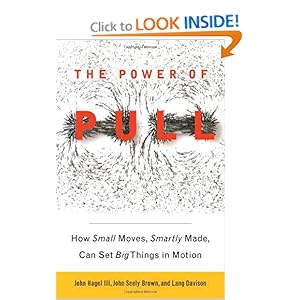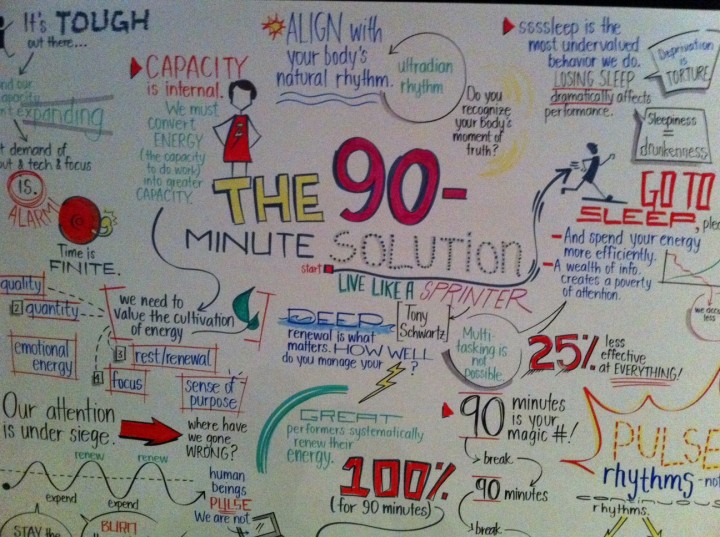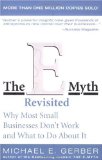57 Meditations on Kicking @$$ in Business and Life"4.8/5 stars" on Amazon
The 3 Ways To Self-Publish Or Sell A Book On Amazon
Tweet 6 Comments
I Self-Published This Book And Am Considering Selling It On Amazon
So I asked San Francisco freelance writer Angela Privin (Wall Street Journal, Yoga Business Times) to research self-publishing/selling on Amazon and write an article on it. Here’s her summary:
Amazon has three programs for self-publishers to choose from:
- Create Space
- Kindle Direct Publishing and
- Advantage.
1) “Create Space:” Create Your Print- Or E-Book On Amazon
Amazon’s first option is Create Space. This online subsidiary company and self-publishing arm of Amazon.com allows the user to create and format a book for either print or digital distribution on demand. …
6 comments so far (is that a lot?) | Continue Reading »
Thursday, May 19th, 2011
The 10 Steps To Hiring An “A-Player”
Tweet 2 CommentsI was thrilled when I saw that Geoff Smart and Randy Street of ghSMART came out with the book Who: The A Method For Hiring on how to improve hiring. If you are involved in any hiring, I suggest you acquire this book right now!
You may recall that I had an incredible experience studying under Topgrading guru Brad Smart (Geoff’s father) in Chicago a few years ago with Eben Pagan and some of the Hot Topic Media gang — that meeting inspired this post: A Mis-Hire Costs You 13X That Person’s Salary: Why You Must Topgrade.
It’s good to see that the Smart family has the additional hiring horsepower …
2 comments so far (is that a lot?) | Continue Reading »
Tuesday, May 17th, 2011
The 10 Types Of “Tardies” Who Are Chronically Late
Tweet 1 CommentI was “running late” for a meeting yesterday (sorry, Jonathan!) — that bummed me out — and while I was sitting in traffic I pondered lateness and committed to banging out this article when I got back to my desk.
Chronic tardiness is rampant:
- Up to 20% of the population is consistently late.
- CEOs are late 8 out of 10 meetings according to a 2006 survey by ProudfootConsulting.
I found a neat book called “never be late again” by Diana DeLonzor who writes about who are almost always late.
Diana lists seven types of people who are almost always late.
I also found three more types of tardy people in a novel about counter-terrorism of all places.
So here they are:
The 10 Types Of Tardies
1) The Rationalizer
This tardie has a hard time acknowledging responsibility for lateness and tends to blame outside circumstances. …
1 comment so far | Continue Reading »
Thursday, March 17th, 2011
How To Create The Next “Shaper” Business Like Facebook, Google & Microsoft (from SXSW)
Tweet 1 CommentBoy, I love John Hagel — This guy is a walking web site. I’m amazed his thoughts on “shaping'” have not become more famous!
Afterall, how many of you wouldn’t like to create the next Google, Facebook, Microsoft or Visa type of ecosystem?
He covers “shaping” and other concepts in his book The Power Of Pull.
I got a chance to meet Mr. Hagel when I sat in on his latest “shaping” presentation at South by Southwest (SXSW) this week.
What follows is a part 2 to the first piece I did on Hagel called How to Shape A Market. …
1 comment so far | Continue Reading »
Monday, March 14th, 2011
Tony Schwartz Tips on Managing Energy & Productivity
Tweet 4 Comments Emotional Energy — How you feel influences how you perform. Duh!A Major Myth — Most of us believe (wrongly) that to get more work done, we should work more time. Instead, …
-->Author Tony Schwartz (Be Excellent At Anything) had some good nuggets on increasing energy and productivity at SXSW in Austin today.
Talented artist Sunni Brown did this super-cool live drawing of Tony’s talk (below).
Some Of Tony’s Energy & Productivity Tips
Emotional Energy — How you feel influences how you perform. Duh!
A Major Myth — Most of us believe (wrongly) that to get more work done, we should work more time. Instead, Tony says, we should manage our energy better.
The Power of Sleep — “Sleep is the single most undervalued behavior in our lives” because of the myth that if we give up one hour of sleep that will equate to one hour of additional productivity.
Quote from Herbert Simon — “What information consumes is rather obvious. It consumes the attention of its recipients. Hence, a wealth of information creates a poverty of attention.”
Multitasking is Bad — It is inefficient to multi-task (technically you can only task-shift). If you shift your attention from something, the cost to you is 25% effectiveness on that first item’s successful completion.
Two Tips On Improving Your Productivity— He cites a study of Berlin violinists by some guy who is an “expert on experts” (they were cited in Outliers)
#1 Practice– The top violinists practiced for 90 minutes maximum in 3 sessions primarily in morning (Schwartz says that it’s been proven that you can only practice 4.5 hours total in a day (that’s the limit))
#2 Sleep — Schwartz said that the superstar violinists slept more than average violinists (typically 8+ hours per night) and that they also napped on a regular basis (about 2.8 hours per week).
If any of this sounds familiar, it’s because I wrote about Tony Schwartz’s previous book The Power of Full Engagement in How To Recharge Yourself and The 20 Best Business Books Of All Time.
4 comments so far (is that a lot?) | Continue Reading »
Monday, February 21st, 2011
A Quick Rework (By 37 Signals) Book Review
Tweet CommentI recently finished reading the book Rework by Jason Fried & David Heinemeier Hansson, the founders of the small but powerful 37 Signals company.
Rework and 37 Signals’ last book (Getting Real) are unique in that they give you a birds eye view on operating a small business (37 Signals has just a few employees) whose products (software for design & productivity) are used by millions.
Here’s a sampling of 5 tips I liked from Rework:
1) The Easiest Product To Make Is One That You Want To Use
The main reason here is that you don’t have to worry about focus groups; you know what the products needs or doesn’t need first-hand.
2) What To Work On First In A New Product
“What’s The Hot Dog In Your Hot Dog Stand?”
I love this quote: Fried & Heinemeier Hansson are suggesting that if you were to start a hot dog stand, the first thing you’d want to work on is the…hot dog (as opposed to the napkins or relish).
I’ve found this hot dog stand analogy to be a simple way to help entrepreneurs figure out where to start on new product creation.
3) What Features To Launch A Product With?
Entrepreneurs face “feature-creep” all the time.
Fried & Heinemeier suggest you ask yourself: If you had to launch your product in 2 weeks, what features would you include?
For example, Crate & Barrel didn’t wait to build fancy displays when they launched their first store (they flipped over “crates and barrels” that the merchandise came in and stacked products on top of them.
4) A Great Quote About Usability:
“Cool wears off, useful never does.”
That’s a good quote I like for erring on the side of usability over coolness with product design.
5) Hire Managers Of One
Fried & Hansson recommend you hire people who set their own goals and execute and don’t need a lot of hand-holding.
This is similar to the “Drivers” (DACI Model) most imperative to getting things done.
One measurement of whether someone is a Manager of One/Driver, the 37 Signals founders say, is that if you leave these people alone, they surprise you with how much they get done.
Overall, the Rework book is a simple read for people trying to create a new business or running a small business; it didn’t make the Top 20 Best Business Books Of All Time but it’s not too far off.
No comments yet | Continue Reading »
Saturday, February 19th, 2011
The 20 Best Business Books Of All Time
Tweet 3 CommentsMy brother-in-law Rich recently asked me for my favorite business book. I had a tough time answering because a slew of book titles raced through my mind.
Well, make room on your bookshelf because I dove in and came up with 20 top business books below:
The Best Business Books Of All Time
1) Poor Charlie’s Almanack
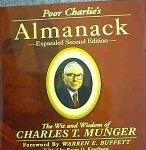
If I had to pick just one business book for folks to read, it would be this illustrated tome by Charlie Munger — Warren Buffett’s long-time right-hand man — with its folksy and entertaining tales of business and life (see Charlie Munger Quotes for a taste).
There’s plenty of Buffett tips in here too so you get two-for-one! …
3 comments so far (is that a lot?) | Continue Reading »
Friday, November 19th, 2010
How To Build A Successful Business From The Ground Up (Tips From Gerber!)
Tweet 5 CommentsIf you love business and are, or are considering, starting a business, the book E-Myth by Michael Gerber (sketched below) is a must-read.
Gerber is a master of teaching business who has taught thousands of business leaders.
Here are some key takeaways from The E-Myth Revisited:
The Three Personalities Of Every Business-Person
1) The Entrepreneur
- The visionary
- The dreamer
- The catalyst for change
- Turns a trivial condition into an exceptional opportunity
Blind Spot: Most people are problems that get in the way of the entrepreneur.
2) The Manager
- The planner
- Thinks in the past
- The catalyst for status-quo
- Looks at opportunities as potential problems
The Manager chases after the Entrepreneur to clean up their mess…for without the Entrepreneur, there would be no mess!
3) The Technician
- The doer
- The tinkerer
- Lives in the present
- If the Technician doesn’t do it, it won’t get done
The Three Stages of Business
1) Infancy Stage
In Infancy, you (the founder) ARE the business. You’re often working 10+ hours a day and absolutely nailing your business. You’re likely mostly being the Technician described above.

How do you know if you’re in Infancy?
Answer: If you were removed from the business, the business would disappear.
So, you don’t want to be an Infant very long.
Infancy ends when you decide that your business can not continue to be run where it’s nearly 100% dependent on you (many owners quit in their Infancy stage).
2) Adolescence
If you don’t quit your biz at this point, you move on to the Adolescence stage.
Adolescence begins when you decide to get some help.
This is often precipitated by a crisis in the Infancy stage. 😉

Gerber cautions that a major mistake many entrepreneurs make during Adolescence is that when they make their first hire they Manage by Abdication (handing off an assignment and running away) rather than Manage by Delegation.
And Gerber points out that when you Manage by Abdication, the person/people you hired will begin dropping some balls…you may start to notice that:
- the product might not be quite the same quality as when you built it
- the marketing might not convert quite as well
- customer service might become a little loosey-goosey
The reason: because you didn’t teach your new hire well enough!
You weren’t being a good “Manager.”
And then the Technician in you jumps back into action…micro-managing every part of the business process to fix the product, the marketing, the customer service.
Before you know it, you are back doing all the work again…being the “Technician.”
At this point, a business usually faces 3 scenarios…they:
- Get Small Again — They go back to the Infancy stage; the owner may get rid of their new hire(s)) and revert back to a sole-proprietorship.
- Go For Broke — They just keep going and try to scale up…these usually end up in a melt-down.
- Remain An Adolescent — They stay put as a grumpy owner of a small poorly-managed business, usually to the detriment of their friends, family and, especially, their business.
But there is hope, Gerber points out, and that’s the highest level of a business performance.
3) Maturity
So how do you become a “Mature” business? Simple…you start out that way!
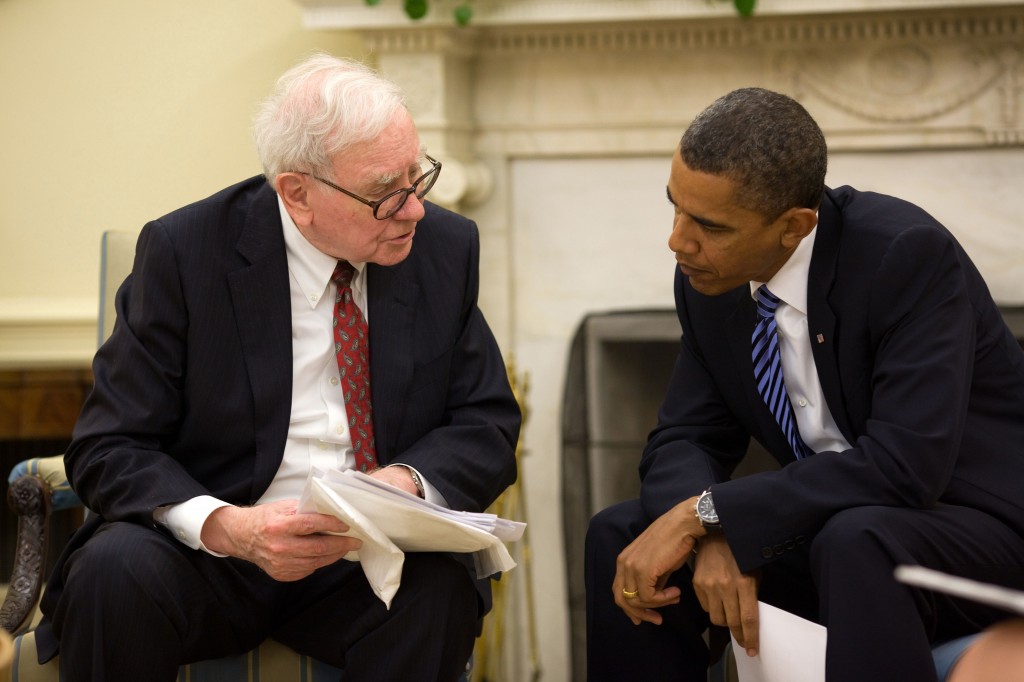
Gerber points out that IBM’s Tom Watson attributed the following to IBM’s success:
“I had a clear picture of what the company would look like when it was finally done”
“I then asked myself how a company which looked like that would have to act.”
“…we began to act that way from the beginning.”
“In other words, I realized that for IBM to become a great company it would have to act like a great company long before it ever became one.”
These moves by an “Entrepreneur” at the beginning of a business are thus quite key.
How To Create A “Mature” Business From The Ground Up
Gerber then recommends a series of tips/approaches to how an Entrepreneur can design a business from the ground up as one that will become mature and successful. They include:
- Turn-Key Systems — Provide the rest of the business with the system to execute. This will likely require documentation of the business’ systems in Operations Manuals that serve as a checklist for each component of your business.
- Work On Your Business, Not In It — “Your business is not your life,” Gerber emphasizes. It is an “organism…that will live or die according to how well it performs its sole function: to find and keep customers.”
- Your Primary Aim — You the business owner need to articulate (for yourself) your “primary aim” (as Gerber calls it). I call this a Life Purpose and you can try my How to Write A Purpose Statement article which includes an exercise that you could use to figure out your “Primary Aim” in life.
- Strategic Objective — Develop a clear statement of what your business has to do to help you achieve your Primary Aim.
- What’s Your Product — “What feeling will your customer walk away with? Peace of mind? Order? Power? Love? What is he really buying when he buys from you?”

